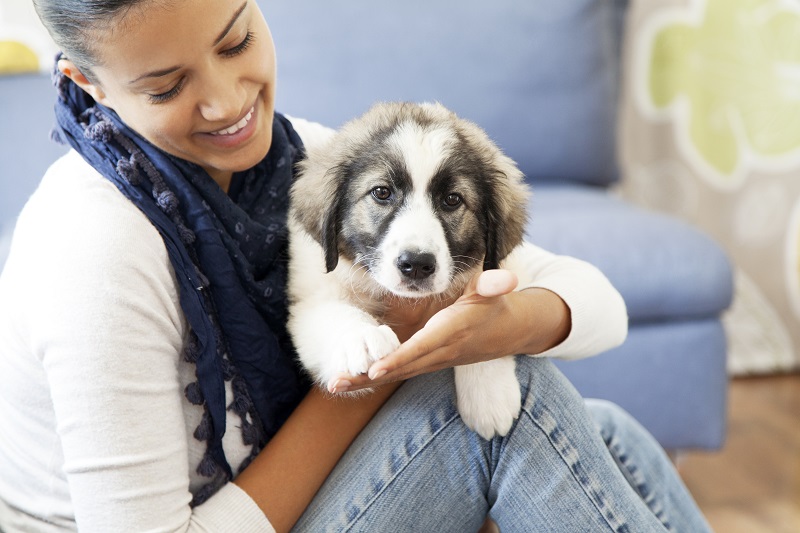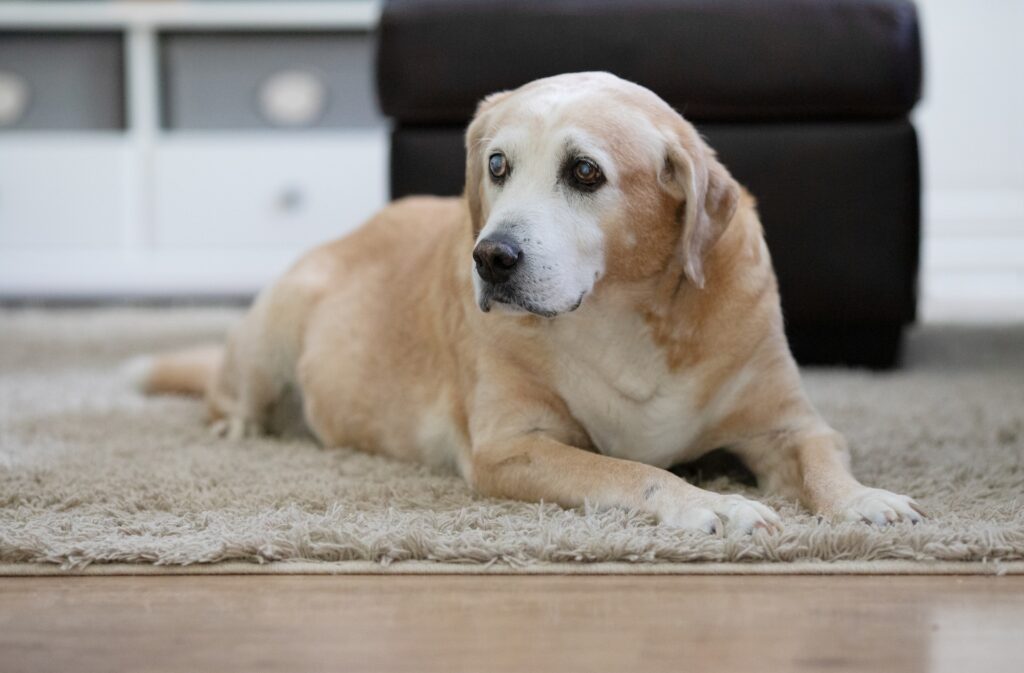Dogs are known to grow thick winter coats during the cold seasons so you might be wondering do dogs get cold? The answer is yes, dogs can feel cold in winter. Follow the steps below to keep your dog warm and healthy over the chilly months.

Give your dog warm bedding
Like us, dogs like to feel snug and secure in a comfy bed. If your dog is sleeping inside, place a cosy winter dog bed in your living room or bedroom. Provide them with an extra blanket to burrow under. For senior dogs, puppies, and smaller breeds with short coats who are prone to feeling the chill, consider putting a microwavable heat pack in their bedding to help warm them up.
If your dog stays outside, make sure their winter dog kennel is sturdy, drought-free, and is placed out the elements. A winter dog bed and some blankets inside the kennel will go a long way to keep your dog warm and comfortable outside.
Dress your dog in warm clothing
Is your dog shivering on their morning? Are they sticking close to the heater or fire? They could benefit from an extra layer.
Petbarn has a wide range of winter clothing for dogs of all shapes and sizes, ranging from snug and cosy knit sweaters to protective raincoats to thick, water-resistant coats to adorable booties and beanies. They’ll be the most stylish (and warmest!) pup in the park.
Monitor your dog’s diet and exercise routine
When you’re leaving for work and coming home in the cold and dark, finding the motivation to exercise your dog can be hard. However, if you are feeding your dogs the same amount of food but reducing their exercise, they will inevitably gain weight.
Keep your dog healthy in winter by taking them on shorter walks in the morning and night using high-visibility accessories like reflective leads, harnesses and clothing to keep them safe and warm.
Watch your dog’s waistline and reduce the amount of food they get every day if they start looking a bit too round. To make sure you’re feeding your dog the right food for their age, breed and lifestyle, use our Food Finder tool.

Watch out for signs of arthritis
Sore joints are very common in the canine world, especially as dogs reach their senior years, and colder weather can increase their discomfort.
Sometimes we may not recognise the signs of arthritis until their joints become very painful. Keep an eye out for symptoms in your dog:
- They’re less active
- They lagging behind when walking
- They have difficulty jumping onto beds, couches or into the car
If your dog exhibits these symptoms, book an appointment with your local Greencross Vets. Your veterinarian can recommend an arthritis management program tailored for your pet.
Keep your senior dog comfortable by providing them with an orthopaedic dog bed made from thick and high-quality foam to support their joints, back and body. Look after their overall health with senior support supplements or their joint health with dog joint supplements.

Continue flea, tick and worm prevention
Don’t forget to continue flea, tick and worming medication throughout the year. We often see outbreaks of fleas during the winter months as there is a residual population that has survived inside the home. With heaters on, many homes are the perfect temperature for fleas to thrive, especially in homes with carpet.
Our Flea, Tick and Worm Treatment Finder can recommend the right combination of products that will keep your dog protected against the parasites in your area.

Don’t neglect their grooming routine
A poor-quality coat is ineffective at keeping your dog warm. As your pooch grows its thick winter coat, it’s important that you brush, bathe and groom them to maintain its condition and prevent matting. This is particularly important in long-haired dogs.
Want to wash your dog over winter? Petbarn’s DIY Dog Washing units use warm water and include complementary shampoo, conditioner and blow-drying facilities so you can wash and dry your dog without making a mess at home.
To pamper your pooch, take them into a Petbarn Grooming salon where they’ll receive the professional grooming treatment.

Frequently asked questions about dogs and winter
Do dogs need to wear coats in winter?
Not all dogs need a coat in winter, but some do benefit from wearing an extra layer. It depends on their breed/ coat type, health status, age, living situation, and other factors. If your dog exhibits behaviour like shivering, burrowing under blankets, and other signs they’re cold, consider buying them a coat.
Do dogs need coats in Australia?
Most of Australia may not get snow, but temperatures do drop low enough that some dogs will get cold and benefit from wearing a coat. It really depends on the weather conditions where you live and what level of cold your dog can tolerate.
What’s the best dog jacket for winter?
The “best” dog jacket depends on your dog’s lifestyle. If they’re outdoors or you enjoy going on walks, a weatherproof coat might be best. If they’re an indoor couch potato, they might like a soft, warm jumper style.
The most important thing it so make sure it fits well.
Can dogs sleep outside in winter?
If your dog is used to sleeping outside, has a thick winter coat, and has a warm bed in shelter out of the elements, then they can sleep outside in winter. However, it’s always nice to let them sleep inside out where it’s slightly warmer, if possible, especially if you live in an area that’s known to drop to freezing temperatures.
Do dogs get cold while sleeping?
If your dog doesn’t have a warm sleeping space, they may get cold while sleeping. Keep them warm by providing a good, thick bed and blankets. If they sleep outside, ensure they have access to shelter that protects them from the elements.
Do dogs curl up when they are cold?
Yes, dogs may curl up when they are cold. It’s one way to try and preserve body heat. Other signs that your dog is feeling the cold include shivering, burrowing under blankets, and seeking out warmth.
Can you tell if a dog is cold by their ears?
Ear temperature is not an accurate measure of how your dog is feeling. Instead of feeling their ears, you can check their body temperature with a thermometer or watch for behavioural indicators that they’re cold, such as shivering, curling up, and seeking warm places among other signs.


